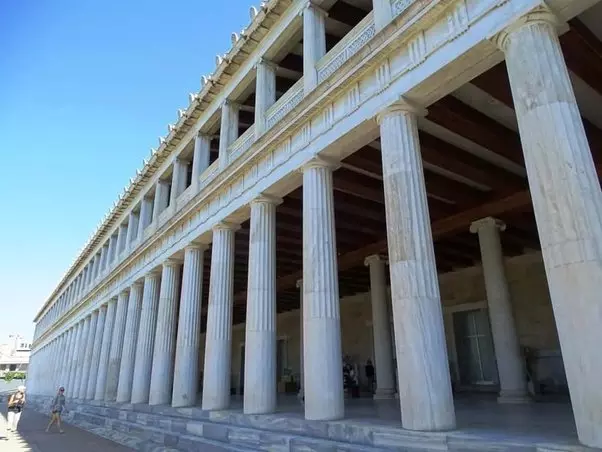We explore the captivating features of an arcade. These architectural wonders have graced civilizations throughout history, adding an air of sophistication to buildings and public spaces alike. From ancient temples to modern structures, colonnades continue to captivate us with their timeless beauty and functional design. We will delve into what makes an arcade remarkable, how it can be utilized in various settings, and its countless benefits. A colonnade is a striking architectural feature that adds elegance and grandeur to any structure. It consists of a row of columns, typically supporting an entablature or canopy. The beauty of a colonnade lies in its simplicity and symmetry, creating a visually appealing effect. One notable feature of an arcade is its ability to create an illusion of space. Extending the line of sight through the rows of columns gives the impression that the area is more significant than it is. This makes it perfect for enhancing open-air structures such as gardens or courtyards. Another key feature is the play between light and shadow created by the columns. Depending on the time of day and the angle at which sunlight hits them, captivating patterns are formed, adding depth and texture to the overall design. Colonnades also serve practical purposes. They can act as structural support for buildings, distributing weight evenly across their length. The versatility of colonnades allows them to be incorporated into various architectural styles – from classical Greek temples to modern contemporary designs. Whether used in commercial spaces or residential settings, they never fail to make a statement.
What is a colonnade ?
A colonnade, my dear readers, is not just a collection of columns. Its meticulously designed architectural feature adds elegance and grandeur to any structure it graces. Picture rows upon rows of majestic columns standing tall in perfect alignment, creating a sense of harmony and balance. These magnificent structures have been adorning buildings for centuries, with their origins dating back to ancient civilizations such as the Greeks and Romans. In its simplest form, an arcade consists of a series of evenly spaced columns supporting an entablature – the horizontal beam that rests atop the columns. Colonnades come in various shapes and sizes. Some are single-rowed, running along one side of a building or enclosing an open space like a courtyard. Others are double-rowed or multi-rowed, forming impressive arcades stretching for great lengths. The beauty of colonnades lies not only in their aesthetic appeal but also in their practicality. These architectural marvels provide shelter from the elements while allowing ample light and ventilation to flow through their open spaces. They create beautiful transitions between interior and exterior spaces, inviting us to explore further. Whether seen in ancient temples or modern-day museums, colonnades have stood the test of time and continue to enchant us with their timeless allure. They evoke awe and reverence as we see their symmetrical beauty.
How to use an arcade
There are various ways to make the most of this architectural feature. One widespread use is creating an elegant and inviting building or outdoor space entrance. Consider incorporating elements such as grand staircases, welcoming landscaping, and decorative lighting to use an arcade in this context effectively. This can help create a visually stunning and memorable entrance that leaves a lasting impression on visitors. Another way to utilize a colonnade is by incorporating it into an outdoor seating area. Colonnades can transform an ordinary open space into an appealing gathering place by providing shade and shelter from the elements. Adding comfortable seating options, tables, and even greenery can enhance the functionality and aesthetic appeal of the area. Colonnades can also be used within buildings as transitional spaces between different areas. You can create visual interest by strategically placing columns along corridors or hallways while guiding people through the space. Consider how you want to enhance your overall design or function when using a colonnade.
The benefits of a colonnade
Now that we have explored an arcade’s features and usage let’s take a moment to appreciate its many benefits. A colonnade is not just a beautiful architectural feature; it also serves practical purposes. First and foremost, a colonnade provides shade and protection from the elements. Its rows of columns supporting an overhead structure create a covered walkway that shields us from rain or harsh sunlight. This makes it ideal for outdoor spaces such as courtyards, gardens, or even public streets where people can enjoy their surroundings without being exposed to extreme weather conditions. Another benefit of having an arcade is its ability to create visual interest and enhance the overall aesthetics of a space. The rhythmic repetition of columns adds elegance and grandeur to any architectural design. Whether in ancient Greek temples or modern buildings, an arcade’s presence instantly elevates the structure’s beauty and sophistication. Colonnades also serve as gathering spaces where people can socialize, relax, or appreciate their surroundings. They provide an inviting atmosphere for interaction between individuals or groups while offering shelter from crowded areas. Imagine sipping your morning coffee in an open-air café with gracefully lined columns framing your view – pure bliss! A well-designed colonnade can improve ventilation by allowing air circulation through its open sides while creating pleasant breezes within enclosed areas like atriums or patios. This natural airflow helps maintain temperature control and reduces reliance on artificial cooling systems – both environmentally friendly and cost-effective solutions.




